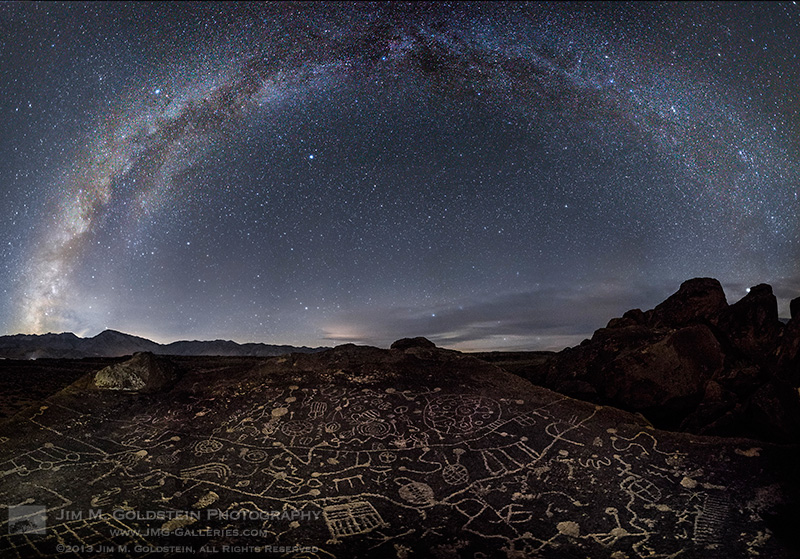
Ancient petroglyphs are amazing to see, but one question that always comes to mind is, “What were their significance?”
In the case of Sky Rock I’ve often wondered if they reflected an interest in the stars, represented every day things, told a story, or were the musings of someone who was just passing the time. It is this curiosity coupled with their distinct artistic and historical qualities that make them so special to me. Seeing these ancient petroglyphs under billions and billions of stars that make up the Milky Way was an awe-inspiring experience given both the immensity and timelessness of the scene. It’s grounding to take in a view that very likely was the same 8000 years ago when someone created these rock drawings as it was on the night I stood here taking this photo.
Photo Details
Canon 5D Mark III and Zeiss Distagon T* 2.8/15 ZE via BorrowLenses.com
ISO 6400, 30 sec at f/2.8
16 image panoramic with foreground lit via light painting
~180 degree field of view capturing both the entire Milky Way and Sky Rock petroglyph

Jim, it’s beautiful.. the canopy of Milky Way sheltering the work of an ancient artist. Beautiful both visually and conceptually. Couple of questions if I may, Why 16 frames, since you could get that angle with 2 or three fish-eye images. For the size of the final image to print huge [a wall sized print for a museum or visitors centre would be most impressive]. Or you happened to have just that lens with you. And the light painting, did you do it for every frame with the foreground?
Thanks! Fish-eye lenses introduce a large amount of distortion making stitching a real challenge. IT also diminishes the clarity of the stars in the areas of greatest distortion. The plan was to use the Zeiss 15mm because it can achieve an ultra wide field of view while minimizing distortion. This is a 2×8 panoramic so there is an ultra-wide field of view vertically as well. As for the light painting, it was done for each image where the foreground was photographed.
Amazing work Jim! Worth all the time you spent working on the stitching (I remember the tweets!). Curious: did one row of the pano just contain the petroglyphs with the other row containing the Sky (overlapping at the horizon)? I can foresee the light painting challenges here and just curious on your approach…
I love this! 4D seeing 5D coming.. the old/past, & the present/now! Thank you!
..
Thanks Peggy 🙂
You have it exactly right. One row was of the foreground and the 2nd row was of the sky. Because each image shared the exact same exposure setting stitching wasn’t much of a problem.